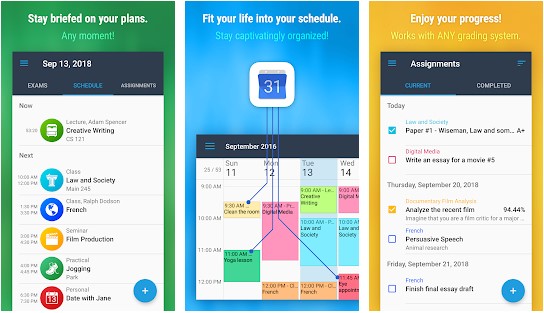
Just over half of all college students ever graduate.

These are two fundamental elements critical in recruiting new students. graduation rates, every student who doesn’t succeed hits the bottom line and rankings. But with colleges and universities receiving funding now based on outcomes, i.e. Some believe they have functioned without them for X number of years just fine. While many institutions have already recognized the need for mobile apps, others are slower to engage. If you want the transition and the investment to be worth every penny, it’s imperative the mobile app(s) will be readily adopted and become a valued tool for every student. These are serious investments that require a complete overhaul of processes. In fact, 23 percent of mobile app users abandon an app after one use and 62 percent will us an app less than 11 times.įor institutions who invest in mobile app technology, these numbers should make you sit up and take notice. Students will quickly abandon an app that isn’t visually pleasing, engaging and useful. But if you want the app to become part of their everyday routine, it’s going to have to be built around appearances and user experience.
#MOST POPULAR STUDY APPS FOR COLLEGE STUDENTS DOWNLOAD#
Students want an app that is easy to download and use, sure. The most popular apps, the ones that people use most often, are the ones that do more than just enable them to perform a task or find information. We have to remember that the students who attend higher learning institutions are most likely included in the majority who use apps for many of their daily tasks in their personal lives. But having a mobile app isn’t the end of the story. By replacing their outdated systems with one that can present mobile capabilities, these institutions and their students are able to do more and have greater outcomes. They offer turnkey solutions for institutions to revamp how they interact with students. Appearance Is Everythingĭeveloping mobile apps for college students isn’t always easy or inexpensive, but there are companies who are making it much simpler. Websites, in this sense, may soon be compared to the Dewey Decimal System we Gen Xers and baby boomers were once required to use. They are quickly becoming archaic to students who have grown up using apps. They can be slow to load, have too many pages, and often have glitches that require students to re-input information. Websites, even when they are well-built, don’t offer the kind of instantaneous, on-the-go capabilities as mobile apps. They want this information and the ability to perform certain tasks in a more user-friendly app they can access anywhere, anytime. They aren’t wanting to navigate through multiple clicks on the Internet. In fact, students are increasingly choosing colleges and universities that offer a wide range of mobile apps for them to do everything from finding and enrolling in classes to connecting with friends, making financial aid payments and finding their way around campus. They are expecting, based on what they’ve come to learn from their personal lives, that everything they need will be accessible via the Internet and even more so, mobile apps. Many of today’s students don’t even own a desktop computer but come to school “prepared” with a smartphone and a tablet.

It’s going to mean campuses must go where students are spending the bulk of their time, and that’s their smartphones. If a higher learning institution wants to connect and engage with students, they’re not going to do it from behind a desk or via a desktop application. Organizations from every industry and sector will need to jump onto the bandwagon to develop apps that keep them competitive but not just any app will do. Smartphones and digital apps are here to stay. With so much available at their fingertips, there’s no indication this cultural phenomenon will slow down anytime soon. While Gen Xers and baby boomers aren’t far behind, millennials are leading the charge. These statistics illustrate the importance millennials have placed on their digital devices. What are they doing on these smartphones? An easier question to answer might be, “What are they NOT doing on their smartphones?” Surprisingly, the same number of them say they feel anxious when they don’t have access to their smartphone.

A recent study found 39 percent of millennials say they interact more with their smartphones than they do with their friends, parents or co-workers. This trend has continued, as 98 percent of millennials now own smartphones and use apps to do virtually everything.įor millennials, their smartphones are their best friends, quite literally. Back in 2014, Nielsen found that people were spending 89 percent of their media time on mobile apps and only 11 percent of their time was being spent on mobile web.

The development and use of mobile apps have skyrocketed in the past few years.


 0 kommentar(er)
0 kommentar(er)
